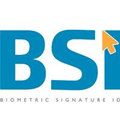Cyberbullying: Its Uniqueness & Prevention
Unfortunately, cyberbullying is prevalent, and a growing threat in today’s always-connected world. Cyberbullying refers to bullying done via computers, or similar technologies, such as cell phones. This kind of bullying usually includes mean or threatening comments, or public posts through texts, emails, voice mails, social media posts, all intended to embarrass the victim.
 Cyberbullying can happen to both adults and kids, but since it’s so common among youths, it’s good to know how to help your children deal with the problem.
Cyberbullying can happen to both adults and kids, but since it’s so common among youths, it’s good to know how to help your children deal with the problem.
One important idea to keep in mind is that unlike the kind of face-to-face bullying that many of us witnessed in school years ago, cyberbullying doesn’t end when the bully is out of sight.
These days, a bully can virtually follow his or her victim everywhere using technology. The bullying can take place without the victim’s immediate awareness, and because of the broad reach of social media, the audience is often much larger than at the school yard.
Since it can be difficult to get a cyberbully to stop their harassment, your best bet is to teach your kids safe online habits to try to prevent a bullying situation in the first place.
Cyberbullying Prevention Tips:
- Let your kids know that you will be monitoring their online activities using parental control software. Explain how it works and how it can benefit everyone. This policy should be well-established long before your kids get their own cell phone and computer.
- Make a point of discussing cyberbullying with your kids, and help them understand exactly what it is and how it happens. These discussions should take place before kids get their devices.
- Set a condition before a child gets his or her very own smartphone and computer they must give their passwords to you. You can, of course, reassure them that you won’t use the passwords unless there’s a crisis.
- Another condition for device ownership is that your kids will sit through instruction on smart online habits, and most importantly, they should understand that once you post something in cyberspace, it’s there forever.
- Once your kids get their devices, role-play with them. This gives you a chance to play the part of a bully, and teach your kids appropriate responses.
- Warn your kids not to freely give out their cell phone number and email address, and tell them that they should never reveal their passwords, even to close friends.
- Stay aware of your children’s online activities and reassure them that they will never get in trouble if they report cyberbullying to you.
Robert Siciliano is an Online Safety Expert to Intel Security. He is the author of 99 Things You Wish You Knew Before Your Mobile was Hacked! Disclosures.


































